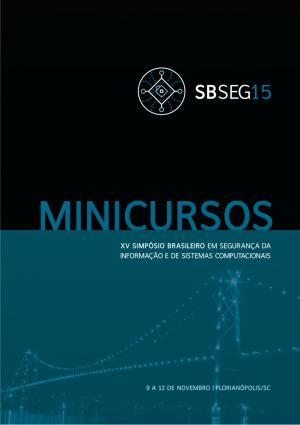Minicursos do XV Simpósio Brasileiro de Segurança da Informação e de Sistemas Computacionais
Palavras-chave:
Segurança da Informação, Sistemas Computacionais, Minicursos SBSeg 2015, SBSeg 2015Sinopse
Este livro apresenta a seleção de Minicursos da 15ª edição do Simpósio Brasileiro em Segurança da Informação e de Sistemas Computacionais (SBSeg). Em 2015, foram submetidas 10 propostas, das quais 4 foram selecionadas para publicação e apresentação, representando assim uma taxa de aceitação de 40%.
Esta edição reúne, portanto, quatro capítulos, produzidos pelos autores das propostas aceitas. No Capítulo 1, os autores discutem a utilização programática de criptografia por desenvolvedores de software com pouca ou nenhuma experiência em segurança da informação e criptografia. O texto mostra aos programadores de software, por meio de exemplos reais e trechos de código, os bons e maus usos da criptografia. O Capítulo 2 discorre sobre o ambiente de aplicações de Mobile Crowd Sensing, focando principalmente nas questões relacionadas à privacidade, segurança e a confiabilidade das informações. No Capítulo 3, os autores descrevem os aspectos que ajudam a tornar uma implementação de criptografia em software eficiente e segura. E, finalmente, o Capítulo 4 apresenta as principais técnicas e trabalhos relacionados à detecção de spam.
Capítulos
-
1. Introdução à Criptografia para Programadores: Evitando Maus Usos da Criptografia em Sistemas de Software
-
2. Segurança em Mobile Crowd Sensing
-
3. Implementação Eficiente e Segura de Algoritmos Criptográficos
-
4. Abordagens para Detecção de Spam de E-mail
Downloads



